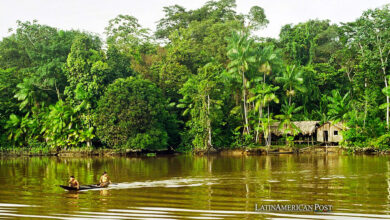How much is the Ozone Layer protected in Latin America and the Caribbean?
Governments have established protocols to avoid the use of harmful substances .

Most of the planet is affected by the weakening of the ozone layer, Latin America, Chile and Argentina have suffered the consequences of wear as they are located in lower latitudes. Photo: Pixabay
LatinAmerican Post | Moisés Campos
Listen to this article
Leer en español: ¿Qué tanto se protege en Latinoamérica y el Caribe la Capa de Ozono?
Most of the planet is affected by the weakening of the ozone layer, Latin America, Chile, and Argentina have suffered the consequences of its wear as they are located in lower latitudes.
In Latin America, the Montreal Protocol was established, which has had an impact on the world with environmental sanitation plans, including that of the ozone layer. By the 1980s and 1990s, progress was made in international consensus with the emergence of the Vienna Convention and the Montreal Protocol.
The participants of the convention decided to create measures and in 1989 the Montreal Protocol began its operations as a fundamental part to save the ozone layer. Through legal efforts and the meeting of all the constitutions of the world governments, this group was established.
The Montreal Protocol brought together 180 nations for the year 2003, which have accepted projects to regulate the use of substances that are harmful to the ozone layer. The countries with the highest consumption are Brazil, Mexico and Argentina, with almost 80% since 2000.
Actions developed by the countries
Several countries have contributed their participation through experiences and plans, regions of Latin America and the Caribbean have joined in the activities of the Global Environmental Citizenship Project, to combat the damage of the ozone layer.
Also read: Why is Earth Day important?
Argentina
In Argentina, several companies transformed their production systems using elements that replace CFC 11 with liquid carbon dioxide found in the air, which does not pollute the environment. The Autosal company began the production of a refrigerant model that was positioned as the first in continental America and that does not destroy the ozone layer.
Costa Rica
In Costa Rica, demonstration projects were planned in 1999, exposing the strategies for the use of methyl bromide for cut flowers. In 2004 the Refrigerant Management Plan was approved, which established the strengthening of licenses to import and export elements that destroy the ozone layer and thus comply with the elimination and substitution programs for these components.
Cuba
In Cuba, the Refrigerant Management plan, approved by the Multilateral Fund of the Montreal Protocol, has been undertaken with the help of the Government of Canada. The Cuban legal basis has been very strict for import tasks, whose order establishes that all ODS substances must be eliminated, according to the application of Law 81 on the Environment, which emphasizes the protection of the ozone layer.
Chile
In Chile there is the Ozone Layer Protection Program, created by the National Environmental Commission (CONAMA) that has been operating since 1993. Through its plans, the efficient reduction of CFC emissions is estimated , ensuring that the nation complies with all the established regulations.
Ecuador
The demonstration project is under development at the Army Polytechnic School to achieve the choice of summer flower crops where new substances are tested to avoid damaging the ozone layer. Ecuador intends to regulate the importation of CFC components, especially for refrigeration equipment with polluting elements.
Mexico
Mexico has been one of the main pioneers of the Montreal Protocol created in 1992, where the fundamentals for the elimination of CFC consumption were implemented as an eradication project by 2020, which promotes the care of the ozone layer.
Peru
The National System of ODS Import Permits was also approved to restrict imports of substances regulated for the conservation of the ozone layer. In this way, various technological strategies have been established to solve the problems increased in recent years by various natural, civil and industrial factors, in which the ODS plans and other agencies involved have been successful.
World economy in favor of Ozone protection
The world economy declines due to the deficit of the ozone layer, since the main sources of production of the nations depend on the strengthening of an optimal environmental system. Agriculture is the essential source of production in most Latin American and Caribbean countries.




